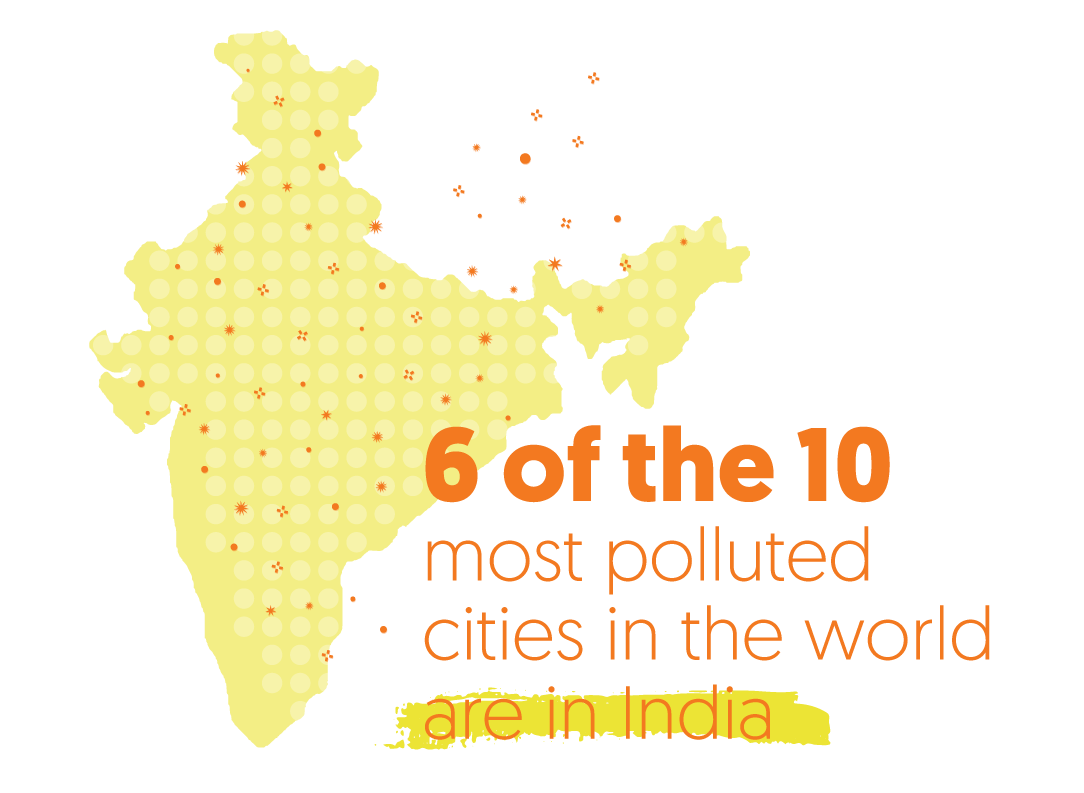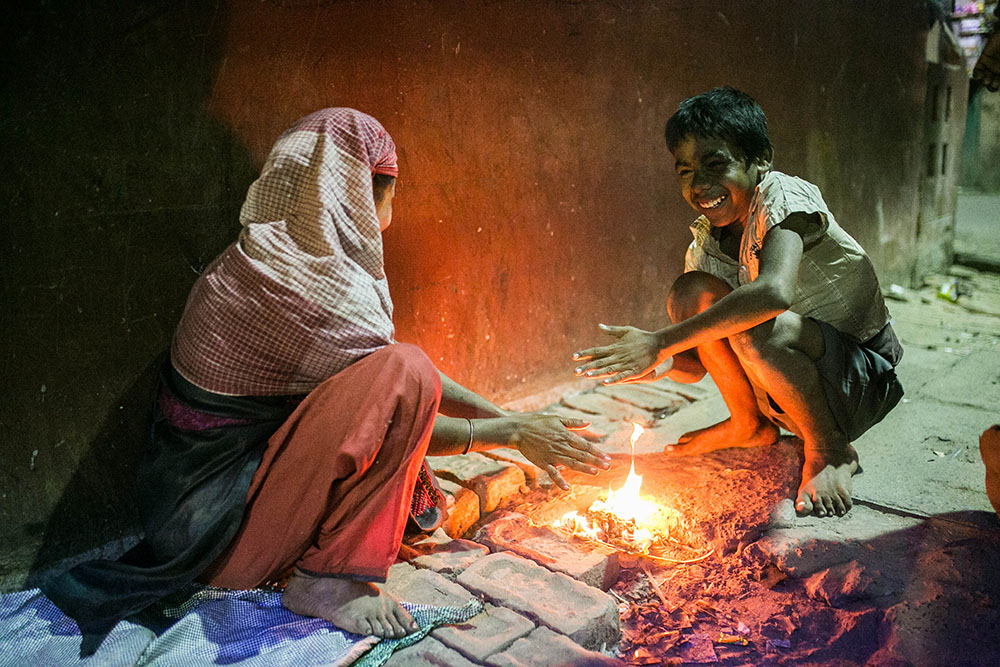HIGHLIGHTS
Every Breath You Take
The CHAI project, which officially ended in 2019, has contributed to important insights on air pollution exposure and health in suburban India
Most conclusions on the health effects of air pollution derive from studies performed in developed countries. However, as Cathryn Tonne, coordinator of the CHAI project, points out, “these conclusions may differ considerably in middle- and low-income countries due to differences in population characteristics and air pollution levels and sources.”
Over the past four years, the European Research Council-funded project has focused on measuring exposure to fine particles and its health effects in a peri-urban population in the south of India, a country affected by high levels of indoor and outdoor pollution. Although many results are still being analysed, 2019 saw CHAI’s official completion along with the publication of two major studies.
Air pollution and cardiovascular health
In the first study, the CHAI team evaluated the association between exposure to air pollution and blood pressure in more than 5,000 participants from 28 peri-urban villages near Hyderabad. The findings showed that women exposed to higher levels of fine particulate matter (PM2.5) at their residence had a higher prevalence of hypertension, regardless of the type of fuel used for cooking. “This is because women spend much of their time at their residence,” comments Ariadna Curto, first author of the study. “Our findings suggest that the effects of outdoor air pollution may be independent of the effects of indoor air pollution.”
In the second study, Tonne’s team studied the association between outdoor and indoor air pollution and a marker of atherosclerosis (carotid intima-media thickness, or CIMT). People most exposed to fine particles had a higher CIMT index, which means they are at higher risk of having a stroke or a heart attack. “People using biomass fuel for cooking also had a higher CIMT, particularly women who cooked in unventilated spaces,” explains lead author Otavio Ranzani. The study also showed that the annual average exposure to PM2.5 was 32.7 µg/m3, far above the maximum levels recommended by the World Health Organisation (10 µg/m3).
According to Tonne, “These studies are highly relevant for countries which, like India, are experiencing a rapid epidemiological transition and a sharp increase in the prevalence of hypertension, diabetes and obesity. In addition, India is affected by high levels of air pollution, both ambient and indoors, and would greatly benefit from public policies aimed at reducing it.”

Photo: Martin Jernberg / Unsplash.
Curto A, Wellenius GA, Milà C, Sánchez M, Ranzani O, Marshall JD, Kulkarni B, Bhogadi S, Kinra S, Tonne C Ambient particulate air pollution and blood pressure in peri-urban India. Epidemiology. 2019 Jul;30(4):492-500
Ranzani OT, Mila C, Sanchez M, et al. Association between ambient and household air pollution with carotid intima-media thickness in peri-urban South India: CHAI-Project. International Journal of Epidemiology. 2020 Feb;49(1):69-79
HIGHLIGHTS
Every Breath You Take
The CHAI project, which officially ended in 2019, has contributed to important insights on air pollution exposure and health in suburban India
Photo: Martin Jernberg / Unsplash.

Most conclusions on the health effects of air pollution derive from studies performed in developed countries. However, as Cathryn Tonne, coordinator of the CHAI project, points out, “these conclusions may differ considerably in middle- and low-income countries due to differences in population characteristics and air pollution levels and sources.”
Over the past four years, the European Research Council-funded project has focused on measuring exposure to fine particles and its health effects in a peri-urban population in the south of India, a country affected by high levels of indoor and outdoor pollution. Although many results are still being analysed, 2019 saw CHAI’s official completion along with the publication of two major studies.
Air pollution and cardiovascular health
In the first study, the CHAI team evaluated the association between exposure to air pollution and blood pressure in more than 5,000 participants from 28 peri-urban villages near Hyderabad. The findings showed that women exposed to higher levels of fine particulate matter (PM2.5) at their residence had a higher prevalence of hypertension, regardless of the type of fuel used for cooking. “This is because women spend much of their time at their residence,” comments Ariadna Curto, first author of the study. “Our findings suggest that the effects of outdoor air pollution may be independent of the effects of indoor air pollution.”
In the second study, Tonne’s team studied the association between outdoor and indoor air pollution and a marker of atherosclerosis (carotid intima-media thickness, or CIMT). People most exposed to fine particles had a higher CIMT index, which means they are at higher risk of having a stroke or a heart attack. “People using biomass fuel for cooking also had a higher CIMT, particularly women who cooked in unventilated spaces,” explains lead author Otavio Ranzani. The study also showed that the annual average exposure to PM2.5 was 32.7 µg/m3, far above the maximum levels recommended by the World Health Organisation (10 µg/m3).
According to Tonne, “These studies are highly relevant for countries which, like India, are experiencing a rapid epidemiological transition and a sharp increase in the prevalence of hypertension, diabetes and obesity. In addition, India is affected by high levels of air pollution, both ambient and indoors, and would greatly benefit from public policies aimed at reducing it.”
Curto A, Wellenius GA, Milà C, Sánchez M, Ranzani O, Marshall JD, Kulkarni B, Bhogadi S, Kinra S, Tonne C Ambient particulate air pollution and blood pressure in peri-urban India. Epidemiology. 2019 Jul;30(4):492-500
Ranzani OT, Mila C, Sanchez M, et al. Association between ambient and household air pollution with carotid intima-media thickness in peri-urban South India: CHAI-Project. International Journal of Epidemiology. 2020 Feb;49(1):69-79









